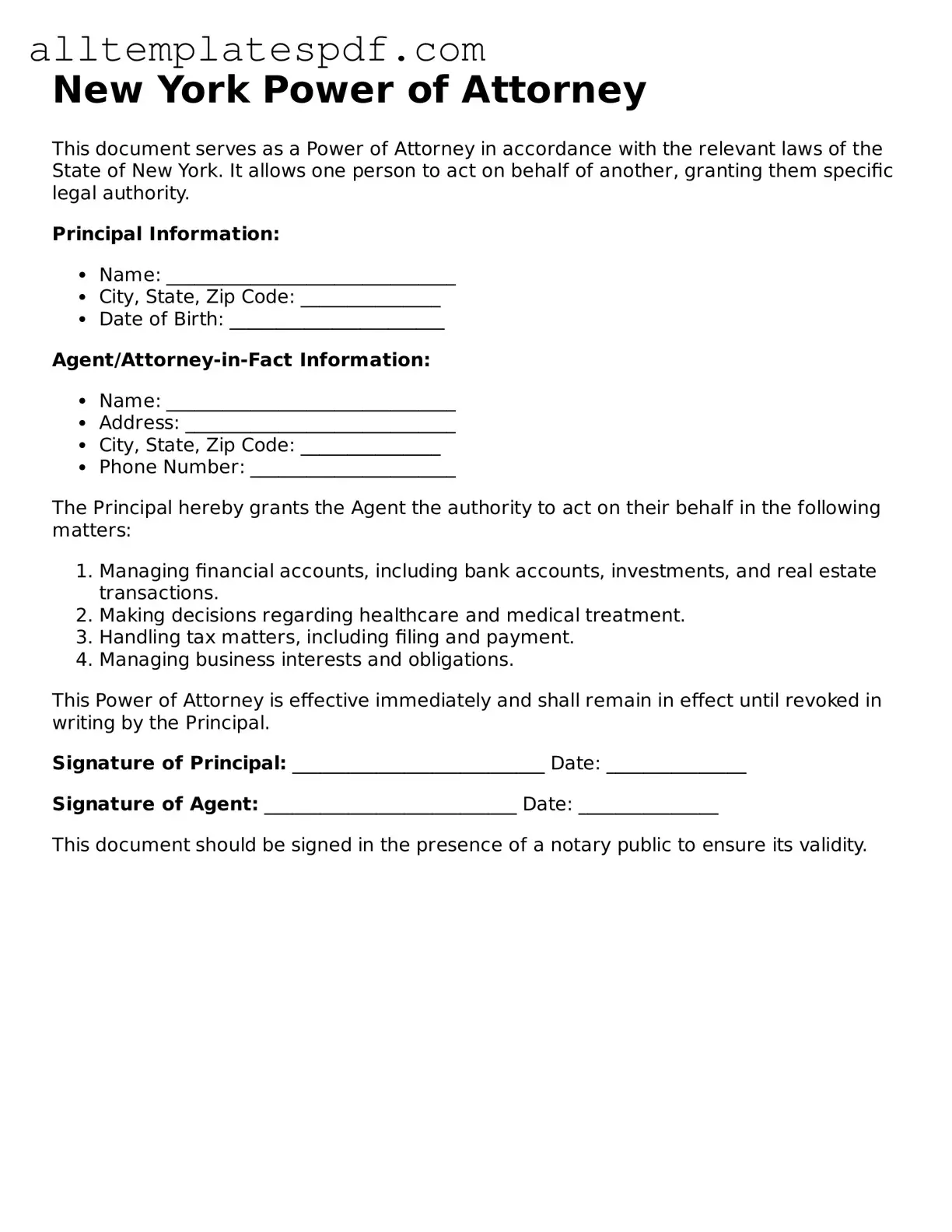Filling out a Power of Attorney (POA) form in New York can seem straightforward, but many individuals make critical mistakes that can lead to complications down the line. One common error is failing to specify the powers granted to the agent. Without clear instructions, the agent may not know what decisions they are authorized to make. This ambiguity can lead to misunderstandings and potential disputes among family members.
Another frequent mistake is neglecting to date the form. A POA must be dated to be valid. If the date is missing, it could raise questions about when the authority was granted. This omission can create confusion, especially if the principal becomes incapacitated and the validity of the document is challenged.
People often overlook the requirement for witnesses and notarization. In New York, a Power of Attorney must be signed in the presence of a notary public. Failing to have the document properly notarized can render it invalid. Similarly, not having the required witnesses can complicate matters, especially if the document is ever contested.
Another mistake is not providing the agent's full name and address. This information is crucial for the document's effectiveness. If the agent's identity is unclear, financial institutions or healthcare providers may refuse to honor the POA, leaving the principal without necessary assistance.
Many individuals also forget to review the form for completeness. Missing sections or unanswered questions can lead to confusion and potential legal issues. It’s essential to ensure that every part of the form is filled out correctly and completely to avoid any challenges later.
Lastly, people often neglect to discuss the POA with the chosen agent beforehand. Open communication is vital. The agent should be aware of their responsibilities and agree to take on this role. A lack of discussion can lead to misunderstandings about the principal's wishes and the agent's willingness to serve.
